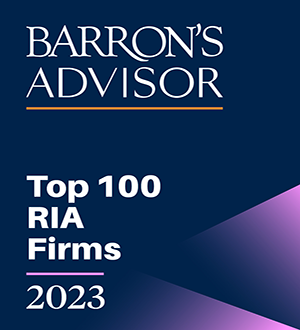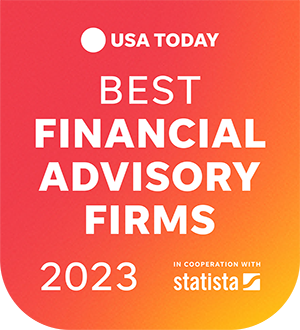Investment Outlook Fall 2023
By Argent Wealth Management, LLC on October 19, 2023
Historical Patterns, the Current Bull
Market, and What’s Next
Third Quarter Review, Fourth Quarter Outlook:
The stock market exhibits patterns that tend to repeat over time. An analysis of historical patterns suggests that the current bull market will continue through 2024. The trend of economic data also supports this.
Long-Term or Secular Stock Markets
Stock markets go through long-term bull markets and bear markets. These are often referred to in the investment community as “secular trends.” The last two secular bull markets lasted ~18 years and ~24 years. The current secular bull market which started in 2009 is ~14 years old. The average gain per annum is well within the historical gain per annum that we have seen in secular bull markets of the past. As noted below, long-term historical patterns support the current bull market continuing into 2024.

Short-Term or Cyclical Stock Markets
A pattern exists in cyclical stock market cycles , which occur within secular cycles, and tend to last about five years. They generally follow a four-step pattern. They start with a bear market (1), are followed by a post-recession bull market (2), which is followed by a non-recessionary bear market (3), before they end with another bull market (4). The cycle we are in has followed this pattern.
Cyclical bear markets can be grouped into two categories: cyclical bear markets within secular bear markets and cyclical bear markets within secular bull markets. Stocks in cyclical bear markets within secular bear markets tend to take more significant losses over more extended periods than stocks in cyclical bear markets within secular bull markets. The average return of stocks in cyclical bear markets within secular bull markets is ~ -23% over 200 days (green square). The cyclical bear market in 2022 was close to average, or what you would typically see in phase 3 of a cyclical bear within a secular bull.

We have yet to see if the current bull market that started about a year ago will continue. If we are in fact in a cyclical bull within a secular bull, history would suggest stock markets have more upside. The average cyclical bull within a secular bull last ~750 days and increases over 100% cumulatively. The S&P 500 is up ~17.5% over the last year.


Seasonality
The third quarter is a seasonally weak time of year. This quarter was no different. Both bonds and stocks were negative as interest rates continued to rise. Economic data was stronger than expected, increasing the chances the Federal Reserve increases interest rates at least one more time, and/or keeps rates at a higher level longer than expected. Bonds lose money as interest rates rise, and the value of stocks decreases as projected cash flows are discounted at a higher rate.

The blue line in the NDR cycle composite chart for 2023 on the chart below is a prediction of how the market would be expected to act in the third year of the presidential election cycle. This chart takes the average of daily returns for the S&P 500 going back to January, 1928. It then takes the average of daily returns for the third presidential year going back to January of 1928. It combines the two averages. The orange line, or actual returns of the S&P 500, has tracked the blue line closely until the recent sell-off. The third quarter tends to be the weakest time of year on average for the stock market.

Followers of Argent’s Market View, which is published monthly on our blog at argentwm.com/blog.html, will know that we expected seasonal weakness. The Market View suggested that weakness would likely continue until sentiment got pessimistic. NDR’s trading sentiment just went into its pessimistic zone.
If stock markets and pessimism recover into year end and new highs for the year are reached, as the seasonal cycle composite would suggest, then it would continue to lend evidence that we are in a cyclical bull market within a secular bull market and investors could be more confident that even higher equity returns are likely in 2024.

Economic Data is Trending Positively
There is still ~1.5 job openings per unemployed person, which is down from 2.0 (an all-time high since data was kept). Wage growth has also slowed. That helps bring inflation down, which is the chief reason the Fed raised interest rates from 0-.25% in March of 2022 to 5.25-5.5% which is where it stands today.
Due to wage growth slowing and other factors, inflation is on a downward trajectory.
This means the Fed is at the end, or near the end, of its tightening cycle.


Credit conditions, which tend to deteriorate before a recession, have improved recently. These indices measure the cost and availability of credit. Both consumer and business credit conditions remain favorable, making loans more availability to businesses interested in growth. And if a person wants a mortgage and has a decent credit score, it is likely available.

The U.S. consumer has had higher than normal savings over the last few years. After -ax disposable income remains robust and is trending positively. With consumption in the U.S. at ~70% of GDP, the economy could stay resilient and even grow despite higher interest rates.

If the economy continues to grow, the stock market is more likely to stay resilient and make new highs in 2024. With the Fed having raised interest rates dramatically in the last year and a half, there is always a risk that the economy and inflation could cool too fast. That could certainly cause equity markets to falter. But that may be temporary. The Fed has more room to lower interest rates than they have had since 2001 to fight an economic downturn. If the Fed were to lower rates to fight a slowing economy, that would increase the attractiveness of stocks for two reasons. First, cash flows discounted at a lower interest rate are worth more . Second, lowering interest rates would improve credit conditions (the cost and availability of debt), which would help buttress the economy. That should give investors some comfort if volatility increases.
Historical patterns and the trends in economic data suggest that the bull market is more likely than not to continue in the next year. Therefore, investors should stick with their long-term financial plan and use volatility to adjust exposure within their risk tolerance bands to take advantage of opportunities.
Sign up to receive more information about Argent's Services and Solutions.
Argent Wealth Management, LLC is a group comprised of investment professionals registered with Hightower Advisors, LLC, an SEC registered investment adviser. Some investment professionals may also be registered with Hightower Securities, LLC (member FINRA and SIPC). Advisory services are offered through Hightower Advisors, LLC. Securities are offered through Hightower Securities, LLC.
This is not an offer to buy or sell securities, nor should anything contained herein be construed as a recommendation or advice of any kind. Consult with an appropriately credentialed professional before making any financial, investment, tax or legal decision. No investment process is free of risk, and there is no guarantee that any investment process or investment opportunities will be profitable or suitable for all investors. Past performance is neither indicative nor a guarantee of future results. You cannot invest directly in an index.
These materials were created for informational purposes only; the opinions and positions stated are those of the author(s) and are not necessarily the official opinion or position of Hightower Advisors, LLC or its affiliates (“Hightower”). Any examples used are for illustrative purposes only and based on generic assumptions. All data or other information referenced is from sources believed to be reliable but not independently verified. Information provided is as of the date referenced and is subject to change without notice. Hightower assumes no liability for any action made or taken in reliance on or relating in any way to this information. Hightower makes no representations or warranties, express or implied, as to the accuracy or completeness of the information, for statements or errors or omissions, or results obtained from the use of this information. References to any person, organization, or the inclusion of external hyperlinks does not constitute endorsement (or guarantee of accuracy or safety) by Hightower of any such person, organization or linked website or the information, products or services contained therein.
Click here for definitions of and disclosures specific to commonly used terms.



